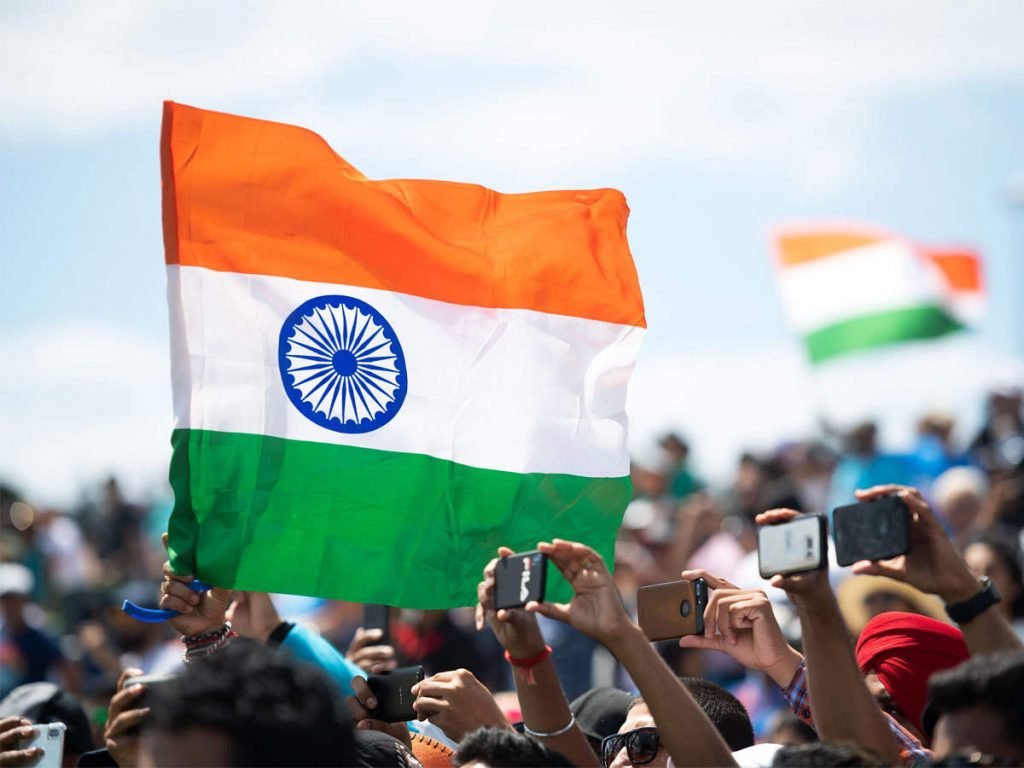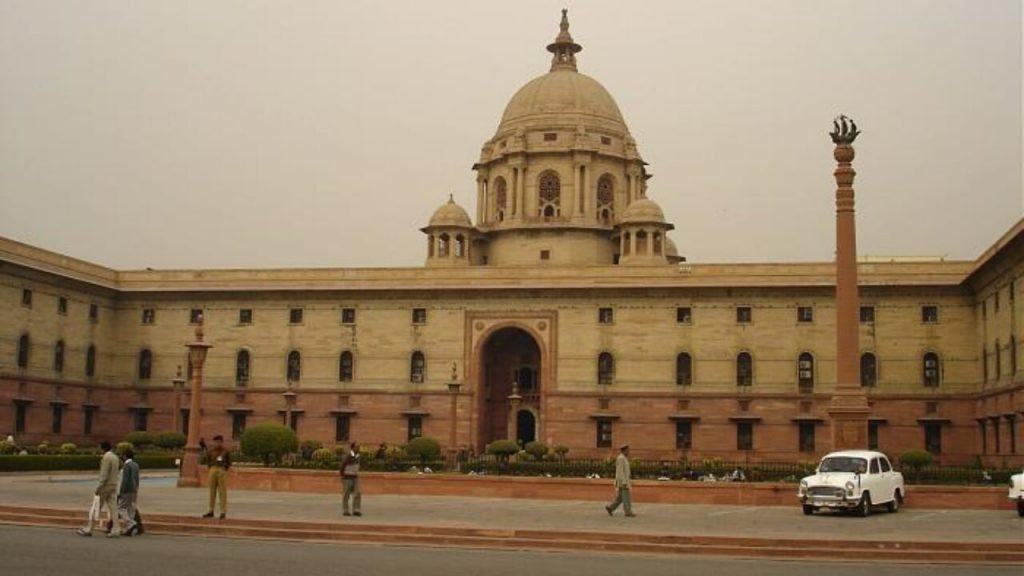Book Review – Making India Great: The Promise of a Global Power

India, currently, is being seen as an aspiring global power, ever since it has opened up its economy in 1991 from a tight socialist structure, filled with many barriers including trade licensing, state control on market. Still, it seems, that India is not free from its own pains and internal challenges where it is, basically struggling to be recognised in the global order or neighbourhood.
Dr. Aparna Pande gives a lot of insights in this book about how India should be able to cope with various external as well as internal at a time it has deal with eggs in one basket, whether its issues such as religion, culture, foreign policy, economic development, ideology and education, which has witnessed a lot of changes plus also a lot of conflicts on these issues which has led the Tiger not come up to its potential. There are many promises to fulfil which New Delhi has committed on multiple occasions and events but the rigid bureaucratic setup and regional politics doesn’t give it a proper chance to assert itself as a tolerant, pluralistic and free country in front of aspiring players in Asia, which are aiming to encircle India, because of the latter’s weaknesses and other internal security concerns.
Get your copy of Making India Great
This book belongs to a pre Covid era, where many changes have taken place in a multipolar international order, which discusses about India’s internal politics creating a sluggish imager globally with respect to a country which had a glorious history with respect to a secular religion, values, norms where India was accommodative to many communities. Due to this weakness, India is still being seen as a small player, which can be easily bullied by a stronger country such as China, which it is doing currently with respect to the current Himalayan Standoff, which is still happening where multiple rounds of negotiations have failed and how India can build its image through aid giving in order to keep countries out of Beijing’s clutches.
The first two chapters discuss about the role nationalism played in Indian politics, shaping institutions and how it impacts society, which has been split due to divide in groups, which were aspiring to secure their own rights, demands. These tools are used in polarising votes and mass mobilisation where the public is completely confused in the world’s largest democracy which side to choose. In a democracy like India, even fundamental rights such as the right to secular practise of faith, have also been side lined with regards to communalism in the recent past.

Many Western countries are in hope about India’s role globally, but are also sceptical about the maltreatment of minority ethnic groups and lifestyles of common citizens which could be seen through the 2020 Citizenship Amendment Bill, NRC protests where the protestors were manhandled. Right wing politics have not been seen in good light globally with respect to adjustment towards modernity and living in a globalised world with reforms, secularism and universalism. May historical Indian thinkers were influenced by these ideas of a common religion, free of any dogma or superstition, which include Raja Rammohan Roy, Vidyasagar, Swami Vivekananda , who even believed in reformation of Indian culture and education , free of any caste or creed, acceptance and inclusion of other groups with different identity through common understandings, values and accepting the fact that even women need access to all opportunities and services where in many rural areas, they are still not looked well upon.
Ever since times immemorial, India has always supported freedom to practise any religion as per an individual’s own preference. In the 20th Century, when many religious groups were disillusioned with Indian culture being influenced by foreign invaders , which could evident with regards to Islam invasion and the colonial rule. Many nationalist elements emerged on order to raise these sentiments in a broad forum such as the Hindu Mahasabha, Rashtriya Swayamsevak Sangha, who believe in the establishment of a Hindu Rashtra or Hindu Nation. Also, came Vinayak Savarkar, who propounded this idea in his writing Hindutva. , about India being the homeland and fatherland for all Hindus, Buddhists, Sikhs and Jains but the others are considered outsiders. Religion is meant to be inclusive, free from any dogma or superstition which the author made references to Nehru and Gandhi but many still don’t agree in the country, impacting the will to evolve and reform.
Due to these developments, even the Muslim League was formed and demanded a separate Muslim state, which turned out to become Pakistan later and these right win g groups started becoming very strong ever since the early 90’s, demanding construction of a Ram Temple on disputed land along with banning beef export, essential for India’s GDP. Nationalist elements, it seems that, have really controlled any of the central government’s policies, even now.
The education system is also going through various changes, witnessed through amendments in textbooks, change in historical facts in textbooks, making study of holy texts compulsory in schools. Backwardness in ideas and thought along with non -adaption to changes could bring a country many years behind. So, an important point raised by the writer in the book is about not living in the past all the time, which is a reason behind non adaption to reforms, change, technology, being a reason for India to be looked own in spite of the rich cultural heritage, soft power capabilities, so it is necessary to focus on the present and future amidst the evolving period of globalisation where information, interconnectivity, interdependence are becoming really important in shaping lives, narratives where adversaries are using these tools for garnering power at the cost of others.
Second and third chapters discuss about human development which gives focus on skill development, which is important in tackling poverty and the rise of the educated youth, which will play an important role in shaping the country’s growth story abroad since majority of the population is in their mid-twenties and there is a special need to increase institutional and educational opportunities. Rural development also has to be looked at, where majority of India is rural based. There is a need to ensure self-reliance in the villages, which could only be done if small and medium enterprises are promoted alongside cottage industries.
The fourth and fifth chapters discuss about various defence reforms and precise strategic checks on any power imbalance in the region needed in a vast country like India needs during times of many geopolitical threats in the neighbourhood. India has always had a foreign policy of promoting territorial sovereignty, non-interference in internal affairs of other states, mutual respect. New Delhi has done enough to ensure peace and stability in the region from it side through its belief in an inclusive order , free from any pressure coming from a superpower at a moment, when many of its neighbours are encircling it to put pressure on various geopolitical issues where there is a need for New Delhi to harden its stance, by developing and laying focus on connectivity , humanitarian initiatives such as the SAGAR and Sagarmala where India has done a lot during the Covid pandemic with respect to sending aid to countries such as Cambodia, Sri Lanka and Maldives, Indonesia.

Indian foreign policy always has something to do with encirclement, which is an integral part of Kautilya’s principles where China is a powerful player, where through its String Of Pearls , it is bringing many of the neighbours under its thumb through various infrastructure, connectivity initiatives in various important South Asian cities such Hambantota, Gwadar, PoK, Chittagong. These developments give arguments for India to keep open with respect to various countries through its non-alignment to survive in a world of diverging national interests among countries where it is currently focussing on building ties with the Association of Southeast Asian Nations, the United States, Russia, Japan and South Korea.
Common perceptions among countries regarding a revisionist China, has been discussed widely ever since the coronavirus pandemic took place with New Delhi giving special focus on strategic partnerships, joint military drills with like-minded countries which is an essential portion of a grand strategy in the region as suggested by Dr. Pande. This year, in 2020, India held various consultations with members of the Quadrilateral Initiative, where the US, Japan and Australia where even a full -fledged MALABAR Exercise took place, having even Canberra on board during this exercise after 2007.
India, also, because of the geopolitical proximities with its neighbours, is being impacted internally because of their pressure upon it for settling territorial boundaries through these encircling moves by smaller countries reaching to powerful countries such as the China-Pakistan nexus. China has always been an al weather ally of Pakistan because of the USD $ 64 billion China Pakistan Economic Corridor, passing through disputed Indian territories of Gilgit Blatistan. China even has been opposed to even terrorists such as Maulana Masood Azhar and Zakir Ur Rehman Lakhvi, both masterminds of various state sponsored terrorist initiatives, being designated as global terrorists by the UN. India has always been open to negotiations at the first place with many of its countries since New Delhi doesn’t believe in using any economic or cultural tool for setting preferences or show any sort of superiority to any neighbour since all them are linked through a common historical, civilizational linkage but it seems their preferences are changing, now regarding New Delhi as a bully in the region.
This book gives us an idea about how broad international affairs is, ranging from geopolitics, human development, identity-based conflicts. These issues get interlinked, where one issue creates multiple problems and later, makes an impact on the image of a country worldwide. If there is no awareness, ideas then how can one country play a superpower role? India is reaching out to many countries in order muster its level of trade and there is a need for the bureaucracy to keep less tight on the market or any other essential services, which could create more jobs and opportunities, further increasing investments, leading to India becoming investment friendly. When all these issues are line and solved in a proper manner then India slowly could achieve its goal of becoming a responsible global power rather than reluctant.


















